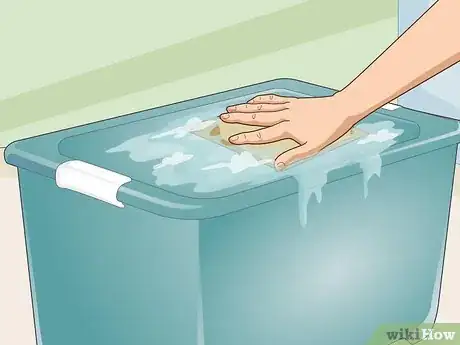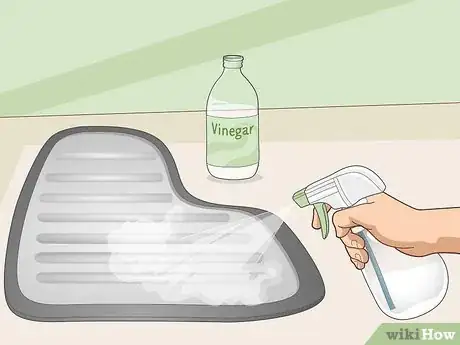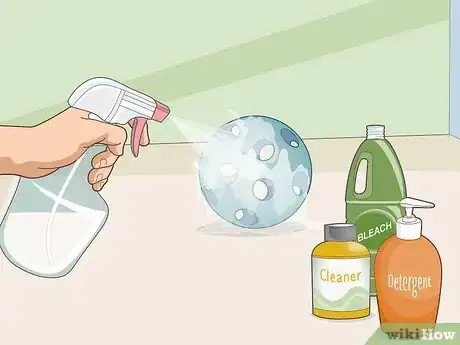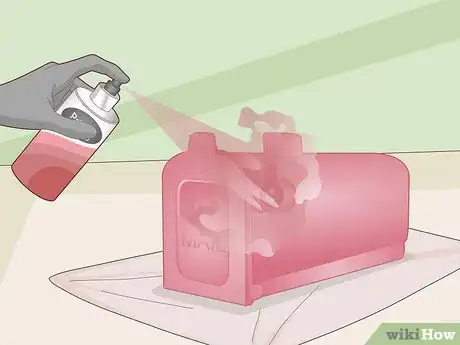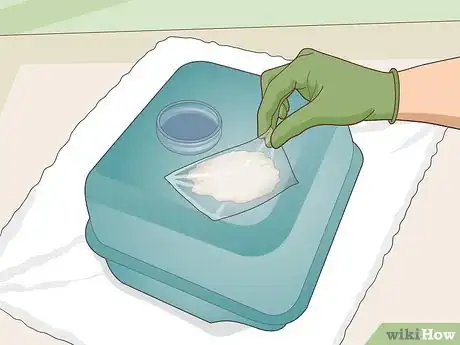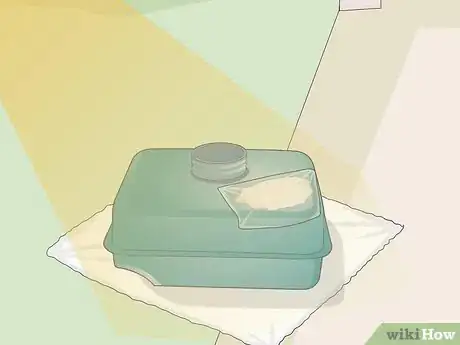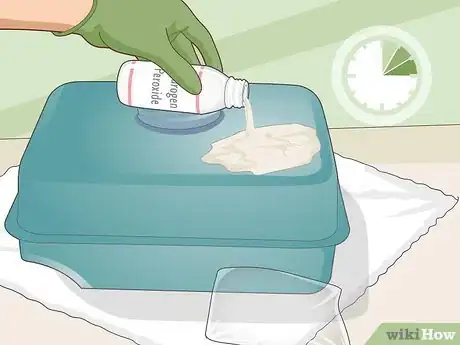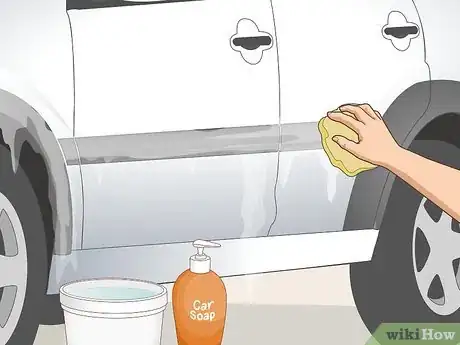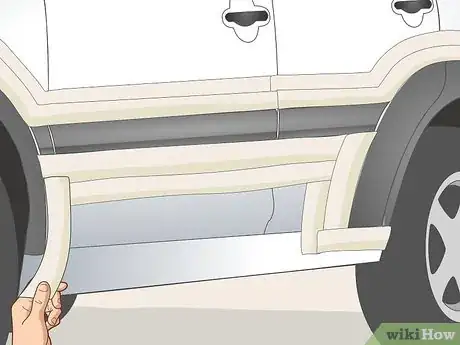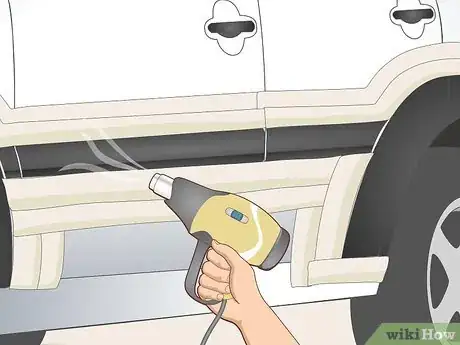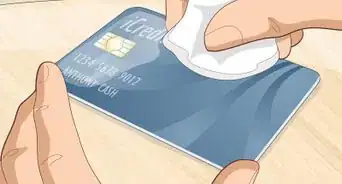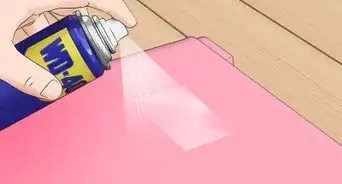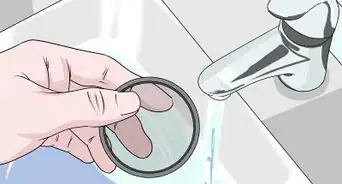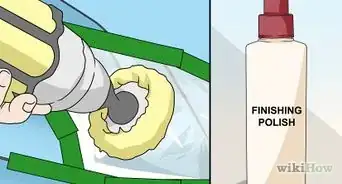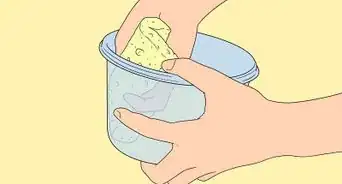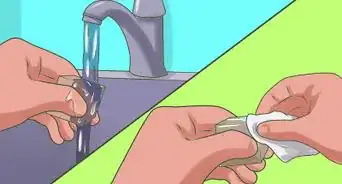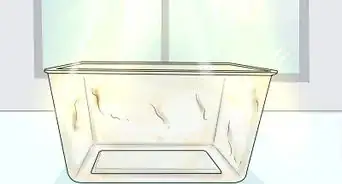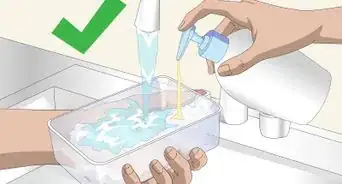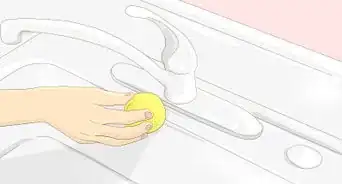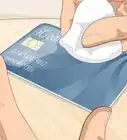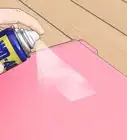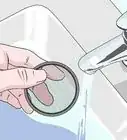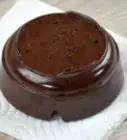This article was co-authored by Susan Stocker and by wikiHow staff writer, Eric McClure. Susan Stocker runs and owns Susan’s Green Cleaning, the #1 Green Cleaning Company in Seattle. She is well known in the region for outstanding customer service protocols — winning the 2017 Better Business Torch Award for Ethics & Integrity —and her energetic support of green cleaning practices.
There are 9 references cited in this article, which can be found at the bottom of the page.
This article has been viewed 78,678 times.
There are a variety of reasons for plastic to fade. Most fading is a result of oxidization, which causes plastic to wear down and develop a rougher texture. Fortunately, you can easily remove oxidation with sandpaper, vinegar, or a bleach solution. Plastic that has faded to a yellow or brown color was made with bromine, which causes the plastic to change color over time. However, you can reverse bromine discoloration with hydrogen peroxide. Vehicle plastics typically fade due to sun exposure, which traps dirt in the plastic, but you can restore the plastic with a rinse and a heat gun.
Steps
Removing Fading from Oxidization
-
1Use soapy water and sandpaper to restore hard plastic. For hard plastics that haven’t been painted, fill a bucket with soap and water. Then, dip 150-grit sandpaper into the soapy water and rub the surface in a circular motion. Cover every faded area 5-6 times. Next, grab a sheet of 220-grit sandpaper and repeat the process by rubbing it the same way. Cover every section 5-6 times before rinsing the surface off.[1]
- Faded plastic that isn’t discolored is typically caused by oxidization. There are multiple ways to remove oxidization using a variety of different cleaning solutions, so choose the cleaning solution based on the type of plastic that is faded.
- Hard plastics that can use this method include storage bins, cutting boards, acrylic aquariums, and plastic furniture.
Tip: You can continue using a finer grit sandpaper if there are any scratch marks remaining on the plastic. For tough plastics though, 220-grit sandpaper should be fine enough to remove smaller scuff marks from the 150-grit sandpaper.
-
2Spray vinyl plastic with vinegar and water. For vinyl plastic, mix 5 cups (1.2 L) of distilled vinegar with 1 gallon (3.8 L) of hot water. Mix the ingredients together and pour it into a clean spray. Take your plastic outside and hold the spray bottle 1–2 feet (0.30–0.61 m) away from the vinyl. Spray it liberally with your vinegar and water and let it sit for 2-3 minutes. Then, rinse the plastic off with cold water and dry it with a cloth or paper towel.[2]
- If the plastic is still faded, repeat this process. Instead of letting the vinegar and water sit on the plastic though, scrub it into the surface with a clean sponge.
- Vinyl plastic is commonly used for exterior siding, car mats, computer cases, and gym mats. Do not use this method to clean vinyl records, though.
Advertisement -
3Use detergent, cleaner, and bleach to restore softer plastics. Put on thick rubber gloves and protective goggles. Mix 1⁄3 cup (79 mL) of liquid laundry detergent with 2⁄3 cup (160 mL) of all-purpose household cleaner. Then, add 1 US quart (950 mL) of bleach and 1 US gal (3.8 L) of water. Mix the ingredients together and add it to a spray bottle. Take your plastic outside and spray the discolored area. Let it soak for 2-3 minutes before rinsing the area with cold water.[3]
- Wash your plastic thoroughly with soap and water after doing this. You don’t want any detergent or bleach residue sticking to your plastic.
- Soft plastics are typically found on children’s toys, malleable storage containers, and souvenirs. If the plastic is bendable or feels light, it’s probably a softer plastic.
-
4Paint your plastic to hide fading if the item has been painted in the past. If your plastic has been painted, the only way to fix fading is to repaint it. Set your plastic down outside on top of a drop cloth and spray the entire item with a spray primer designed for plastic. Wait 1-2 hours for the primer to dry. Then, grab a spray paint made for plastic and hold the nozzle 8–12 inches (20–30 cm) away from the surface. Move the can back and forth while holding the nozzle down to apply a layer of paint. Wait 1-2 hours for the paint to dry.[4]
- Use masking tape to cover up any surfaces that you don’t want to cover in paint.
- You can use a brush and an acrylic paint designed for plastic if you prefer. This is likely to leave brush marks behind, though.
- You can add multiple layers of paint after letting it dry if you want to deepen or darken the color.
- If you only paint the affected area, the new paint will clash with the older layers of paint.
Restoring Discolored Plastic
-
1Apply a layer of hydrogen peroxide hair cream to the discoloration. Get a hair cream designed for bleaching hair that contains 9-12% hydrogen peroxide. Put on a pair of thick rubber gloves and set your plastic on a stable work surface with a towel underneath it. Dip a paintbrush with natural bristles in the peroxide cream and brush it directly on to discoloration. Continue applying the cream until there’s a thick layer covering every discolored section.[5]
- This process will work on any kind of plastic so long as it hasn’t been painted.
- Plastic turns yellow or brown if it was mixed with bromine before it was fabricated. The bromine prevents plastic from catching fire, but over time, sunlight turns the plastic yellow or dull brown.
Variation: If your plastic item is really small, you can simply submerge it in a bowl of 3% hydrogen peroxide and let it soak for 24 hours. This is an easier way to remove discoloration, although it will certainly take longer.[6]
-
2Cover the peroxide cream with plastic wrap or put it in a plastic bag. If your plastic item is small enough to fit inside of a bag, stuff your item inside of a clear food-storage bag. If your plastic item is larger, grab some clear plastic wrap. Pull out a sheet large enough to cover the discoloration. Rip the sheet off and press the sheet down over the peroxide cream.[7]
- You can use multiple sheets of plastic wrap if necessary.
-
3Set your discolored plastic out in the sun. Take your plastic item outside. Set it down on the ground or on some outdoor furniture so that the discolored section of the plastic is directly exposed to the sunlight.[8]
- If it’s cold out or you don’t have a yard, you can leave your plastic item next to a sunny window.
- If multiple sides of the plastic are covered, you can repeat this process for each side of your plastic.
-
4Reapply more cream every hour as needed to keep the plastic wet. Check your plastic item once every hour to see if the peroxide cream is still wet. If it is, leave it alone. If it looks like it’s drying out though, take the item out of the bag or remove the plastic wrap. Apply a fresh layer of hydrogen peroxide with your brush. Then, stick it back in the bag or reapply the plastic wrap.[9]
- It may take 3-6 hours for the discoloration to disappear. Repeat this process as often as you need to until the discoloration is gone.
Warning: If the hydrogen peroxide cream begins to dry, it can dry into the plastic and begin to wear it away. Check in periodically to ensure that your cream is still wet.
-
5Take the plastic sheet or bag off of the item and rinse the area. Once the discoloration is gone, take your plastic item inside. Peel off the plastic wrap or take the item out of the plastic bag. Then, rinse your plastic off under a steady stream of cool water. If your plastic item has any electronic components, spot wash the area you restored with a soft sponge.[10]
Cleaning Plastic on Vehicles
-
1Wash exterior trim and plastic with water and car soap. Cover any painted areas around the plastic with masking tape. Fill a bucket with 1-part car soap and 2-parts water. Then, soak a sponge in the bucket and scrub the plastic that you’re restoring with a sponge. Rub the plastic down using circular motions until the dirt and residue on the plastic is completely removed. Rinse the soap off with water. Dry the plastic with a microfiber cloth.[11]
- This process is perfect for plastic side mirrors, bumpers, and trim. Do not do this on painted surfaces.
Variation: For headlights specifically, clean them thoroughly and use white vinegar and water to restore them.
-
2Protect painted surfaces around the plastic with masking tape. You will use a heat gun to fix the faded plastic on your vehicle. However, the heat from your hot air gun can damage the paint on your vehicle. To protect any painted surfaces surrounding the plastic, use masking tape to cover the 6–12 inches (15–30 cm) around the plastic.[12]
- You do not need to worry about any glass or rubber surfaces, although you should definitely cover any chrome with masking tape.
-
3Heat the plastic with a hot air gun for 30-45 seconds to get it warm. Plug your hot air gun in and set it to the lowest heat setting. Hold the heat gun 6–10 inches (15–25 cm) away from the plastic surface. Pull the trigger to turn the heat on. Run your heat gun around the plastic without holding it in any single section for too long. Continue doing this for 30-45 seconds to warm all of the plastic.[13]
- If you hold the heat gun in the same location for too long, the plastic may melt.
- If you’re doing this on plastic trim, run the heat gun back and forth along the entire portion of the trim to heat it evenly and equally.
-
4Run the heat gun back and forth until the faded plastic looks new again. Keep the heat gun on its lowest setting and move it 4–6 inches (10–15 cm) away from the plastic. Move it around a small 3–4 sq in (19–26 cm2) section by shaking the nozzle back and forth. Continue heating your section until the faded plastic returns to its original color. Move on to the next section of your plastic and repeat this process until your plastic is completely restored.[14]
- On vehicles, discolored plastic is usually a combination of dirt and sun damage. This creates a layer of discolored plastic on top of your vehicle. The heat gun literally melts this discolored layer off. Since the exterior layer is worn down, it will melt at a lower temperature than the unblemished plastic underneath.
Expert Q&A
-
QuestionHow do I get rid of yellow stains on plastic?
 Susan StockerSusan Stocker runs and owns Susan’s Green Cleaning, the #1 Green Cleaning Company in Seattle. She is well known in the region for outstanding customer service protocols — winning the 2017 Better Business Torch Award for Ethics & Integrity —and her energetic support of green cleaning practices.
Susan StockerSusan Stocker runs and owns Susan’s Green Cleaning, the #1 Green Cleaning Company in Seattle. She is well known in the region for outstanding customer service protocols — winning the 2017 Better Business Torch Award for Ethics & Integrity —and her energetic support of green cleaning practices.
Green Cleaning Expert Make a thick paste of baking soda and water, then rub it really well into the plastic. Apply more of the paste over the top, then let it sit for a day. Rinse off the paste and see if the yellowing is better. If it's not, make a mixture with equal parts bleach and water, and let the plastic soak overnight. Then rinse off the bleach and let the plastic sit in the sun for 2 full days.
Make a thick paste of baking soda and water, then rub it really well into the plastic. Apply more of the paste over the top, then let it sit for a day. Rinse off the paste and see if the yellowing is better. If it's not, make a mixture with equal parts bleach and water, and let the plastic soak overnight. Then rinse off the bleach and let the plastic sit in the sun for 2 full days.
Things You’ll Need
Removing Fading from Oxidization
- Rubber gloves
- White vinegar
- Water
- Spray bottle
- Soft-bristled brush
- Laundry detergent
- Household cleaner
- Bleach
- Goggles
- Sandpaper
- Spray paint
- Primer
Restoring Discolored Plastic
- Rubber gloves
- Hydrogen peroxide
- Cream peroxide
- Natural brush
- Plastic bag or wrap
Cleaning Plastic on Vehicles
- Masking tape
- Car soap
- Car polish
- Sandpaper
- Thick gloves
- Hot air gun
References
- ↑ https://youtu.be/Fwk_fNEeH6Q?t=178
- ↑ https://sciencing.com/methods-remove-oxidation-plastic-8716902.html
- ↑ https://sciencing.com/methods-remove-oxidation-plastic-8716902.html
- ↑ https://www.pcworld.com/article/226116/Geek_101_How_to_Fix_Minor_Chips_And_Repaint.html
- ↑ https://www.geekwithenvy.com/2013/07/how-to-make-a-yellow-snes-look-new/
- ↑ https://youtu.be/ZqWpUMjJffE?t=129
- ↑ https://www.geekwithenvy.com/2013/07/how-to-make-a-yellow-snes-look-new/
- ↑ https://www.geekwithenvy.com/2013/07/how-to-make-a-yellow-snes-look-new/
- ↑ http://www.retrofixes.com/2013/10/how-to-clean-whiten-yellowed-plastics.html
